The tongue functions as both a tasting and speaking instrument, yet it also serves as an indicator of your overall health. The appearance, color, and texture of your tongue can reveal underlying health issues. This article explores the typical appearance of a healthy tongue, providing pictures of healthy vs. unhealthy tongues and highlighting warning signs that may indicate health problems.
For detailed 3D models of tongue and dental pathologies referenced in this article, explore the VOKA 3D Anatomy & Pathology website and app.
What Does a Healthy Tongue Look Like?
The proper characteristics of a typical healthy tongue include the following properties:
- Pink color represents the normal appearance of the tongue while it may exhibit slightly different tones between either light or dark tones.
- Small papillae-shaped taste buds cover the tongue surface as its main textured element.
- Slightly moist due to saliva
- No persistent pain and discomfort as well as unusual or burning sensations.
- Minimal white coating but heavy coating might signal potential problems.
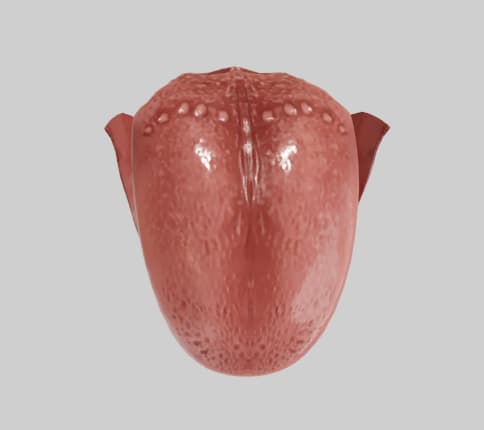
Normal tongue view – 3D model by VOKA Anatomy & Pathology
Signs of an Unhealthy Tongue
An unhealthy tongue can exhibit changes linked to nutritional deficiencies, infections, or systemic diseases. Here’s a detailed breakdown:
Color Changes
- Black Hairy Tongue:
- Causes: Overgrowth of bacteria/yeast due to poor oral hygiene, smoking, or antibiotics.
- Appearance: Dark, furry patches from elongated papillae trapping debris.
- Note: Harmless but can be improved with tongue scraping and oral care.
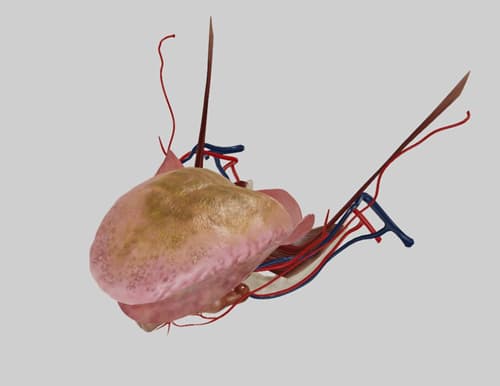
Black hairy tongue – 3D model by VOKA Anatomy & Pathology
- Bright Red Tongue (Atrophic Glossitis):
- Linked to: Iron deficiency anemia or vitamin B deficiencies (B3, B12, folate).
- Symptoms: Smooth, glossy texture due to papillae loss; may cause burning.
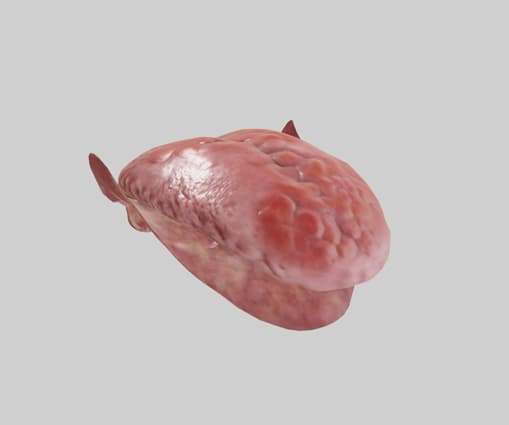
Iron deficiency anemia (atrophic glossitis) – 3D model by VOKA Anatomy & Pathology
- White Patches:
- Median Rhomboid Glossitis:
- Cause: Fungal infection (often Candida).
- Appearance: Smooth, red, diamond-shaped patch near the tongue’s center.
- Median Rhomboid Glossitis:
Texture & Surface Abnormalities
- Fissured Tongue (Scrotal Tongue):
- Features: Deep grooves or cracks; often harmless but may trap food.
- Associated with: Down syndrome, psoriasis, or Melkersson-Rosenthal syndrome.
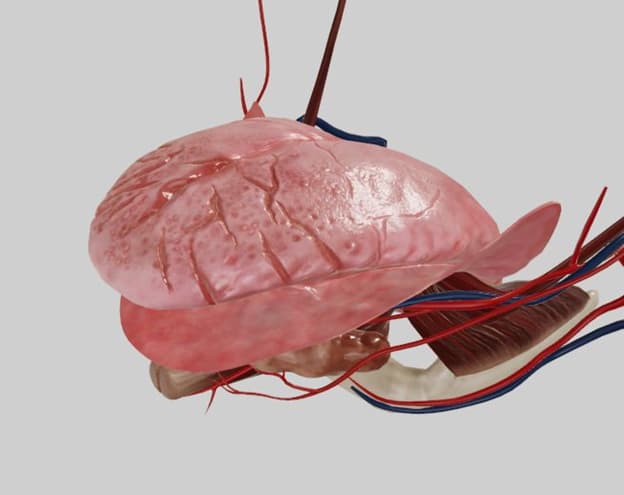
Fissured tongue – 3D model by VOKA Anatomy & Pathology
- Geographic Tongue (Benign Migratory Glossitis):
- Appearance: Map-like red patches with white borders; patches shift over time.
- Cause: Unknown; linked to stress, genetics, or autoimmune triggers.
- Note: Painless but may cause sensitivity to spicy foods.
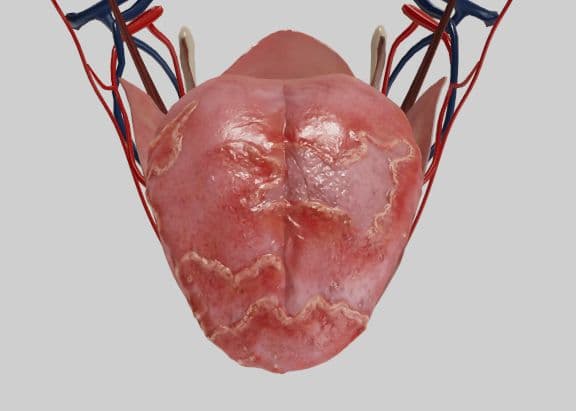
Geographic tongue – 3D model by VOKA Anatomy & Pathology
Pain & Inflammation
- Atrophic Glossitis:
- From Iron Deficiency Anemia: Tongue appears pale, smooth, and swollen.
- From Vitamin B12 Deficiency: “Beefy red” tongue with soreness.
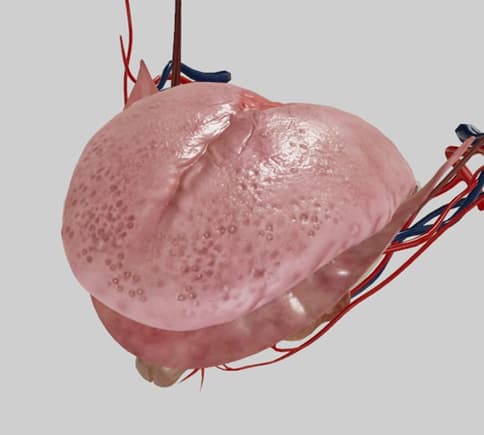
Atrophic glossitis – 3D model by VOKA Anatomy & Pathology
- Oral Thrush:
- Cause: Candida overgrowth (common in diabetes or post-antibiotics).
- Signs: White, cottage cheese-like patches that bleed when scraped.
Bumps & Sores
- Canker Sores: Small, painful ulcers (not contagious).
- Oral Cancer Warning Signs:
- Persistent lumps, red/white patches, or non-healing sores.
For comprehensive peer-reviewed pathology descriptions, consult the VOKA Wikipedia Dentistry collection.
When to See a Doctor or Dentist
While some tongue variations are normal, certain symptoms warrant professional evaluation. Here’s when to consult a doctor or dentist:
Concerning Color Changes
Seek care for persistent discoloration that lasts more than two weeks, including:
- White patches that cannot be scraped away (potential oral thrush or leukoplakia)
- Unusual redness (may indicate vitamin deficiencies or infections like scarlet fever)
- Dark pigmentation (could signal medication side effects or poor oral hygiene)
Persistent Pain or Texture Changes
Medical assessment is needed for:
- Sores or ulcers that fail to heal within 14 days
- Lumps or thickened areas that persist or grow
- Smooth, glossy patches (possible sign of nutrient deficiencies)
- Deep cracks or grooves accompanied by pain
Functional Difficulties
Prompt evaluation is crucial if you experience:
- Trouble moving the tongue normally
- Swallowing problems or persistent discomfort
- Numbness or loss of sensation
Other Warning Signs
Don’t ignore:
- Unexplained bleeding without injury
- Sudden swelling that affects breathing or speech
- Foul taste or odor that persists despite oral hygiene
Why Timely Care Matters
Early intervention can address:
- Nutritional deficiencies before they worsen
- Infections that may spread without treatment
- Precancerous changes when most treatable
Trust your instincts – if something seems abnormal or persists, professional evaluation provides answers and peace of mind. Schedule an appointment promptly for any lasting tongue changes that concern you.
Final Thoughts
The condition of your tongue shows important signs about your physical well-being. Some changes in tongue appearance are insignificant whereas others require medical intervention. Good oral care combined with regular hydration and dental appointments will help you maintain healthy tongue conditions alongside a proper state of health.
Remember: A healthy tongue means a healthier you. Don’t ignore the signs!